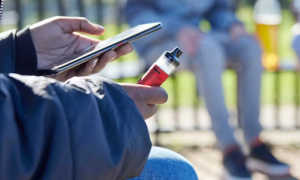
The vaping industry has long been a subject of controversy, with debates raging over its impact on public health, youth access, and the environment. As regulations tighten and public scrutiny intensifies, one market segment has come under particularly intense fire: disposable vapes. Once seen as a convenient entry point for smokers seeking a less harmful alternative to cigarettes, disposable vapes are now being painted as the new villains in the ongoing narrative of the vape industry. But are disposable vapes truly deserving of this label, or are they simply the latest scapegoat in a much larger conversation?
The Rise of Disposable Vapes
Disposable vapes have surged in popularity over the past few years, driven by their simplicity, affordability, and accessibility. Unlike traditional e-cigarettes that require users to refill e-liquid and replace coils, disposable vapes come pre-filled and pre-charged, ready to use straight out of the box. This convenience has made them particularly attractive to beginners, as well as those who prefer a hassle-free vaping experience.
In the early days of vaping, disposables were often viewed as a stepping stone—an easy way for smokers to transition away from combustible cigarettes without the need to invest in more complex devices. However, as the market has evolved, disposable vapes have also become more prevalent. Today, they come in a wide range of flavors, nicotine strengths, and designs, appealing to a broad spectrum of users.
The Environmental Impact
One of the most significant criticisms leveled against disposable vapes is their environmental impact. Unlike reusable vape devices, which can last for years with proper maintenance, disposable vapes are designed for single use and are typically discarded after a few hundred puffs. This has raised concerns about the growing amount of electronic waste (e-waste) generated by the industry.
Environmental advocates argue that disposable vapes contribute to the mounting e-waste problem, which already sees millions of tons of discarded electronics filling landfills yearly. The lithium-ion batteries, plastic components, and metal casings found in disposable vapes are not easily recyclable, and improper disposal can lead to environmental contamination.
In response, some manufacturers have introduced recycling programs, encouraging users to return used devices for proper disposal. However, the effectiveness of these initiatives is limited by consumer participation and the lack of widespread infrastructure to support the recycling of vape products. As a result, the environmental impact of disposable vapes remains a pressing concern.
Youth Access and Flavor Bans
Another major issue that has thrust disposable vapes into the spotlight is their appeal to underage users. The ease of use, discreet design, and variety of flavors available in disposable vapes have made them particularly popular among teenagers. This has led to widespread concern about the potential for nicotine addiction among young people, many of whom may have never smoked traditional cigarettes.
In response to the growing use of disposable vapes by minors, regulators have introduced a series of measures aimed at curbing youth access. One of the most notable steps has been the implementation of flavor bans, which prohibit the sale of flavored vape products, including disposables. Proponents of these bans argue that flavors like fruit, candy, and mint are particularly enticing to young users and that restricting their availability will help reduce underage vaping.
However, critics of flavor bans argue that they may have unintended consequences. By eliminating the availability of flavored disposable vapes, some fear that adult vapers who rely on these products to stay off combustible cigarettes may be pushed back to smoking. Additionally, there is concern that a black market for flavored disposables could emerge, leading to unregulated and potentially dangerous products flooding the market.
The Role of Big Tobacco
The involvement of big tobacco companies in the disposable vape market has further fueled the narrative that these products are the new scapegoats of the industry. Many of the leading brands of disposable vapes are owned by or affiliated with major tobacco companies, which has led to accusations that these companies are simply shifting their focus from cigarettes to e-cigarettes to maintain profits.
Critics argue that the marketing tactics used by these companies, including flashy packaging and targeted advertising, are reminiscent of the strategies once employed to promote cigarettes. This has raised concerns that disposable vapes are being positioned as the next generation of nicotine delivery products, with the potential to create a new wave of nicotine addiction.
On the other hand, supporters of disposable vapes argue that they provide a valuable harm-reduction tool for smokers who are unable or unwilling to quit nicotine entirely. By offering a less harmful alternative to smoking, disposable vapes could help reduce the overall burden of tobacco-related diseases, particularly among populations with high smoking rates.
The Industry’s Response
Faced with mounting criticism, the vape industry has taken steps to address the concerns surrounding disposable vapes. Some companies have introduced new models that are more environmentally friendly, featuring recyclable components or longer-lasting designs that reduce the frequency of disposal. Others have implemented stricter age verification processes to prevent underage sales and have pledged to reduce the marketing of flavored products.
In addition to these efforts, the industry has called for more balanced regulation that takes into account the potential benefits of vaping as a harm reduction tool. Advocates argue that while it is important to address the risks associated with disposable vapes, it is equally important to recognize their role in helping smokers quit combustible cigarettes. This has led to ongoing debates over the appropriate level of regulation for disposable vapes, with some calling for stricter controls and others advocating for a more measured approach.
Conclusion
Disposable vapes have undeniably become a focal point in the broader debate over vaping. As concerns about their environmental impact, appeal to youth, and association with big tobacco continue to grow, it is easy to see why they have been cast as the new scapegoat of the vape industry. However, this narrative oversimplifies a complex issue.
While disposable vapes do present legitimate challenges, they also offer potential benefits for smokers seeking a less harmful alternative to cigarettes. The key lies in finding a balanced approach that addresses the risks while recognizing the potential for harm reduction. This will require collaboration between regulators, industry stakeholders, and public health advocates to ensure that disposable vapes are neither demonized nor overlooked in the ongoing effort to reduce the harm caused by tobacco.
As the debate continues, it is essential to keep in mind that the issue of disposable vapes is just one piece of the larger puzzle. The future of vaping will likely depend on how well we navigate the challenges and opportunities presented by this rapidly evolving industry, ensuring that public health remains at the forefront of the conversation.
The post Are Disposable Vapes The New Scapegoat Of The Vape Industry? appeared first on Naija News.


